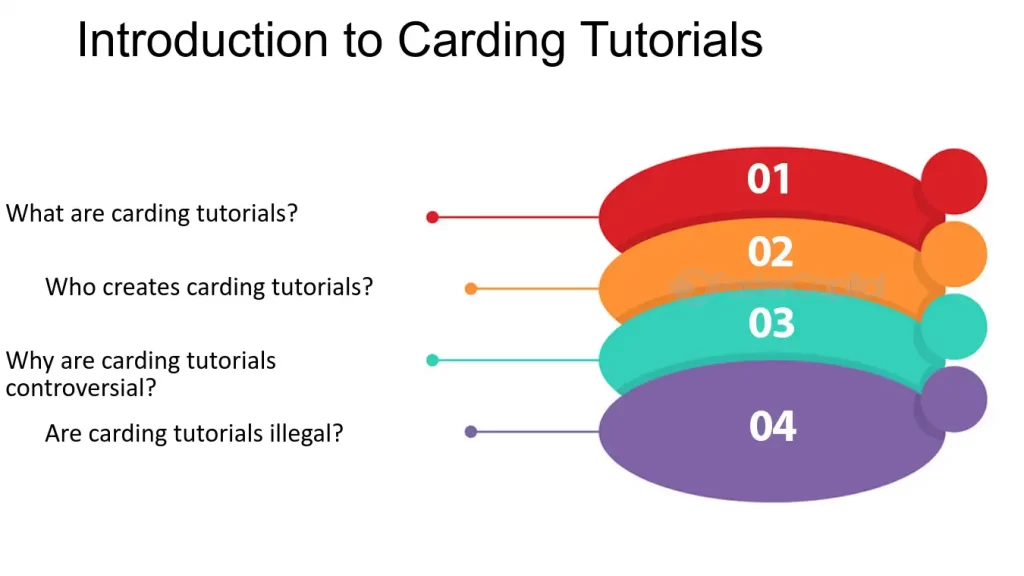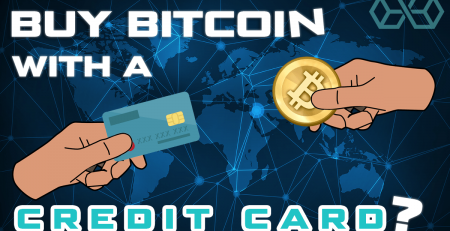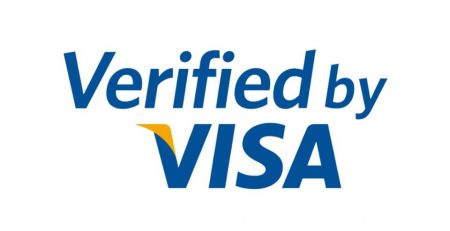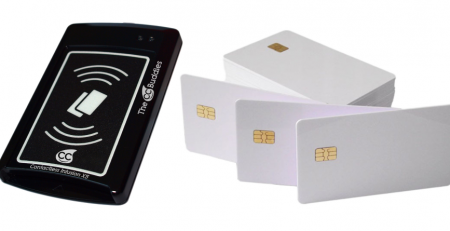Carding Tutorials 2024 update
1. Introduction to Carding Tutorials
In the world of cybercrime, carding is a term used to describe the trafficking of stolen credit card information. This illicit activity has been around for decades and has only gotten more sophisticated as technology advances. Carding tutorials have become a popular resource for cybercriminals to learn the ins and outs of this activity. While some may argue that these tutorials are harmless and are simply a way for individuals to learn about the security vulnerabilities of credit card systems, others see it as a serious threat to the financial security of individuals and businesses. In this section, we will explore the world of carding tutorials and examine the different perspectives surrounding this controversial topic.
1. What are carding tutorials?
Carding tutorials are instructional materials that provide step-by-step guidance on how to commit credit card fraud. These tutorials can be found on forums, chat rooms, and even on the dark web. They cover a range of topics, from how to obtain stolen credit card information to how to use that information to make purchases.
2. Who creates carding tutorials?
Carding tutorials are created by individuals with extensive knowledge of cybercrime and credit card fraud. Some of these individuals may be former cybercriminals themselves, while others may simply be experts in the field. These tutorials are often shared on underground forums and are intended for a select group of individuals who are interested in learning about carding.
3. Why are carding tutorials controversial?
Carding tutorials are controversial for several reasons. Firstly, they provide a blueprint for committing credit card fraud, which can lead to financial losses for individuals and businesses. Secondly, they are often used by cybercriminals to train new recruits, which can lead to an increase in the number of individuals engaging in credit card fraud. Finally, carding tutorials are seen by some as a form of free speech, as they are often protected by the First Amendment.
4. Are carding tutorials illegal?
While carding tutorials themselves may not be illegal, the act of using the information provided in these tutorials to commit credit card fraud is illegal. In addition, some countries have laws that prohibit the creation and dissemination of materials that promote criminal activity.
Carding tutorials are a controversial topic in the world of cybercrime. While some argue that they are a harmless resource for individuals to learn about the security vulnerabilities of credit card systems, others see them as a serious threat to financial security. Regardless of one’s perspective, it is important to recognize that the use of stolen credit card information is a criminal offense and can result in serious consequences.

2. Understanding Credit Card Dumps
credit card dumps are one of the most lucrative products of the underground carding market. These dumps are collections of data stolen from credit or debit cards of unsuspecting victims. Once obtained, the data is then sold in underground forums or the dark web. Cybercriminals can use this data to create fraudulent credit or debit cards, make unauthorized purchases, or conduct identity theft. understanding credit card dumps is essential for those looking to protect themselves from cybercrime or those seeking to venture into the carding market. In this section, we will explore everything you need to know about credit card dumps, including how they work, the types of dumps available, and the risks associated with using them.
1. What are credit card dumps?
Credit card dumps are collections of stolen card data that include cardholder name, card number, expiration date, and CVV/CVC codes. This information is obtained through a variety of methods, including phishing scams, skimming devices, and hacking into online accounts. Once obtained, the data is organized into a dump, usually sorted by card type, country of origin, or bank.
2. Types of credit card dumps
There are two types of credit card dumps: magnetic stripe dumps and chip dumps. Magnetic stripe dumps contain data from the magnetic stripe on the back of the card, while chip dumps contain data from the card’s EMV chip. Magnetic stripe dumps are the most common type of dump, and they are sold for a lower price than chip dumps. However, chip dumps are more valuable because they contain more information, including the card’s PIN.
3. Risks associated with using credit card dumps
Using credit card dumps is illegal and carries significant risks. Those caught buying or selling dumps can face criminal charges and prison time. Additionally, using the dumps to create fraudulent credit or debit cards can result in financial losses for both the victim and the card issuer. Finally, those purchasing dumps run the risk of being scammed by sellers who sell fake or low-quality dumps.
4. protecting yourself from credit card dump fraud
To protect yourself from credit card dump fraud, it is essential to take precautions, such as regularly checking your bank statements, being cautious when using your credit card online, and never sharing your card information with anyone. Additionally, using credit monitoring services, setting up fraud alerts, and freezing your credit can help prevent fraudulent activity.
Understanding credit card dumps is crucial for those seeking to protect themselves from cybercrime and those looking to venture into the carding market. While dumps can be lucrative for cybercriminals, those caught using them can face severe consequences. By taking precautions and being informed, you can protect yourself from dump fraud and other forms of cybercrime.
3. How to Obtain Credit Card Dumps?
Carding is a process of obtaining credit card information and using it to make unauthorized transactions. To carry out this process, carders use credit card dumps which are obtained through various means. Credit card dumps contain information such as the credit card number, expiration date, and cardholder’s name that can be used to make purchases online or in-person. Obtaining credit card dumps can be a complex process, but it is essential for carders to have access to this information to carry out their illegal activities.
There are several ways to obtain credit card dumps, and each method has its own level of risk and difficulty. In this section, we will explore some of the most popular methods used by carders to obtain credit card dumps.
1. Skimming: Skimming is the process of capturing credit card information using a device known as a skimmer. A skimmer is a small electronic device that is placed on a payment terminal, such as an ATM or gas pump. When a customer swipes their credit card, the skimmer captures the information and stores it for later use. Skimming has become a popular method for obtaining credit card dumps because it is relatively easy to carry out and can be done quickly.
2. Hacking: Hacking is another popular method used by carders to obtain credit card dumps. Carders use a variety of techniques to hack into databases containing credit card information. Some carders use brute force attacks to crack passwords, while others use phishing scams to trick people into revealing their credit card information. Hacking is a more complex method than skimming, and it requires a higher level of technical expertise.
3. Buying: One of the easiest ways to obtain credit card dumps is to buy them from other carders. There are several online marketplaces where carders can buy and sell credit card dumps. The price of credit card dumps varies depending on the type of card and the amount of information included. For example, dumps containing information from high-limit credit cards are more expensive than dumps containing information from low-limit cards.
4. social engineering: Social engineering is the process of manipulating people into revealing sensitive information. Carders use social engineering techniques to trick people into revealing their credit card information. For example, a carder might call a customer and pretend to be a representative from their bank. They may ask the customer to confirm their credit card information, claiming it is for security purposes. Social engineering requires a high level of skill and is often used in combination with other methods.
Obtaining credit card dumps is a critical aspect of carding. Carders use a variety of methods, including skimming, hacking, buying, and social engineering, to obtain credit card information. Each method has its own level of risk and difficulty, and carders must choose the method that best suits their needs. It is important to note that carding is illegal and can result in severe consequences, including fines and imprisonment.
4. Checking the Validity of Credit Card Dumps
When it comes to carding, one of the most important steps is to check the validity of credit card dumps. Validity refers to whether or not a credit card dump is still active and can be used for fraudulent purchases. Checking the validity of credit card dumps can be a tricky process, as there are many factors that can impact whether or not a card is still valid. However, it is an essential step in the carding process, as using an invalid card can lead to wasted time and effort, as well as the risk of detection by law enforcement.
There are several different methods that can be used to check the validity of credit card dumps. Some of the most common methods include:
1. Online checker tools – There are a variety of online tools that can be used to check the validity of credit card dumps. These tools typically require users to input the credit card number, expiration date, and CVV code in order to verify the card’s validity. While these tools can be helpful, it is important to be cautious when using them, as some may be scams designed to steal credit card information.
2. Manual verification – Another option is to manually verify the credit card dump by attempting to make a small purchase with the card. This can be done through online retailers or by using the card to purchase a small item in person. If the transaction is successful, it is likely that the card is still valid. However, it is important to note that this method can be risky, as it involves using the card for a fraudulent purpose.
3. Contacting the card issuer – In some cases, it may be possible to contact the card issuer directly to check the validity of a credit card dump. This can be done by calling the customer service number on the back of the card and asking for verification. However, this method is not always reliable, as the card issuer may be suspicious of the request and may refuse to provide information.
4. Checking for red flags – There are several red flags that may indicate that a credit card dump is not valid. For example, if the card has a high balance or has not been used in a long time, it may be more likely to be invalid. Additionally, if the card is from a foreign country or has an unusual name or billing address, it may also be more likely to be invalid.
Checking the validity of credit card dumps is an essential step in the carding process. While there are several different methods that can be used to verify a card’s validity, it is important to be cautious and to avoid using fraudulent methods that could lead to detection or legal consequences. By following the tips and techniques outlined above, carders can improve their chances of success and minimize their risk of getting caught.
5. Techniques for Carding with Credit Card Dumps
Carding with credit card dumps is a process that involves using stolen credit card information to make unauthorized purchases. It is a criminal activity that can result in serious legal repercussions. However, despite the risks, many individuals continue to engage in this illegal behavior. In this section, we will explore some of the techniques used in carding with credit card dumps. We will discuss the various methods used to obtain credit card dumps, the tools required for the process, and the steps involved in making a successful purchase.
1. Obtaining Credit Card Dumps – There are several ways to obtain credit card dumps. One of the most common methods is through data breaches. Cybercriminals can hack into databases and steal credit card information. Another method is through skimming devices, which are placed on ATMs or point-of-sale terminals to capture credit card data. Carders can also buy credit card dumps on the dark web.
2. Tools Required – Carders need specific tools to carry out their activities. One of the essential tools is a card reader/writer. This device is used to read data from the magnetic stripe of a credit card and write it onto a blank card. Carders also need a computer with internet access, a VPN, and a secure email service to communicate with other carders and vendors.
3. Making a Purchase – Once a carder has obtained credit card dumps and has the necessary tools, they can begin the process of making a purchase. The first step is to check the validity of the credit card dumps. This can be done by verifying the card’s balance and making sure it has not been reported stolen. The next step is to find a vendor who accepts credit card dumps. Carders can search for vendors on dark web marketplaces or forums. Once a vendor is found, the carder can place an order and provide the necessary payment information.
4. Risks and Precautions – Carding with credit card dumps is a risky activity. It is illegal and can result in severe legal consequences. In addition to legal risks, carders also face the risk of being scammed by vendors. To minimize these risks, carders must take precautions such as using a VPN to hide their location, encrypting their communications, and only dealing with trusted vendors.
Carding with credit card dumps is a dangerous and illegal activity. While some may be tempted by the promise of easy money, the risks far outweigh any potential rewards. It is important to understand the techniques used in carding to protect oneself from falling victim to these types of crimes.
6. Safety Precautions for Successful Carding
When it comes to carding, safety is of utmost importance. Successful carding involves keeping a low profile, protecting your identity, and avoiding detection. As such, it is essential to take the necessary precautions to ensure that your carding activities remain undetected. Safety precautions are a crucial aspect of carding because the consequences of getting caught can be severe. From being prosecuted and facing jail time to having your personal information exposed, the risks can be life-changing.
One of the most critical safety precautions is to use a vpn or Virtual Private network. A VPN allows you to encrypt your internet connection, making it difficult for anyone to trace your online activities. It also masks your IP address, making it appear as if you’re in a different location. This is important because it helps to protect your identity and location, making it more difficult for law enforcement agencies to track you down.
Another important safety precaution is to use a clean device for carding. This means using a device that has never been connected to your personal accounts or used for personal browsing. It’s also essential to keep your carding activities separate from your personal activities. For example, if you use your personal email for carding, it can be traced back to you. Always create a separate email address for carding and use it exclusively for carding activities.
In addition to using a VPN and a clean device, it’s also important to use a quality antivirus program. This can help to protect your device against malware and other viruses that could compromise your security and expose your identity.
Finally, always be aware of your surroundings when carding. Don’t use public Wi-Fi or public computers for carding activities, as these are not secure and can be easily compromised. Always use a private and secure network for your carding activities.
To sum up, safety precautions are critical for successful carding. Using a VPN, a clean device, a quality antivirus program, and being aware of your surroundings can go a long way in protecting your identity and ensuring that your carding activities remain undetected. Remember, taking the necessary precautions can mean the difference between success and getting caught.
7. Carding Tools and Software
Carding is a complex and sophisticated illegal activity that has been around for many years. It involves using stolen credit card information to make unauthorized purchases or withdraw cash. To carry out this activity, carders need specialized tools and software that can help them bypass security measures and remain undetected. Carding tools and software can range from simple scripts and programs to sophisticated hacking tools that can penetrate even the most secure systems. These tools and software are readily available on the dark web, and anyone with a basic understanding of technology can purchase them.
1. Carding Forums: Carding forums are online communities where carders can share information, tips, and tricks about how to carry out the activity. These forums provide a platform for carders to exchange information, buy and sell stolen credit card information, and collaborate on criminal activities. Some of the popular carding forums include Joker’s Stash, BriansClub, and UniCC.
2. Carding Software: Carding software is designed to automate the carding process and make it easier for carders to carry out the activity. Some of the popular carding software includes Havij, SQLi Dumper, and Scampage. These tools are designed to scan websites for vulnerabilities, extract credit card information, and automate the payment process.
3. Carding Apps: Carding apps are mobile applications that allow carders to carry out the activity on the go. These apps are designed to bypass security measures and make it easier for carders to make unauthorized purchases or withdraw cash. Some of the popular carding apps include CardCracking, CardBoss, and Carding Station.
4. Carding Scripts: Carding scripts are simple programs that are designed to automate the carding process. These scripts are typically used to carry out brute force attacks and scan websites for vulnerabilities. Some of the popular carding scripts include CardPwn, Carding Script, and Card Nuke.
5. Carding Tools: Carding tools are a collection of software and hardware tools that are designed to facilitate the carding process. These tools can range from simple USB devices to sophisticated hacking tools. Some of the popular carding tools include skimmers, shimmers, and RFID readers.
Carding tools and software are an essential part of the carding process. They are designed to facilitate the activity and make it easier for carders to remain undetected. While these tools and software are readily available on the dark web, their use is illegal, and anyone caught using them can face serious legal consequences.
8. Avoiding Detection and Staying Anonymous
When it comes to credit card fraud, staying anonymous and avoiding detection is a top priority for many individuals. Whether you’re a beginner or a seasoned carder, it’s crucial to take the necessary steps to ensure that your identity remains hidden and your actions untraceable. But how exactly can you achieve this? There are several factors to consider, including the tools and techniques you use, as well as the location and method of your transactions. In this section, we will explore some strategies for staying anonymous and avoiding detection in the world of credit card dumps.
1. Use a VPN: One of the most effective ways to stay anonymous while carding is by using a virtual Private network (VPN). A VPN encrypts your internet connection and hides your IP address, making it difficult for anyone to track your online activity. When choosing a VPN, look for one that doesn’t keep logs of your activity, has servers in multiple countries, and offers strong encryption.
2. Use a private browser: Using a private browser, such as Tor, can also help you stay anonymous online. These browsers hide your IP address and encrypt your traffic, making it difficult for anyone to track your online activity. However, it’s important to note that some websites may block access to users who are using a private browser, so keep this in mind when using one.
3. Use a fake identity: Creating a fake identity can also help you stay anonymous while carding. This may involve using a fake name, address, and other personal information when making transactions. However, it’s important to note that using a fake identity is illegal and can result in serious consequences if you’re caught.
4. Use a drop address: Using a drop address, or a temporary address that you use for online transactions, can also help you stay anonymous. This may involve using a friend or family member’s address, or renting a mailbox at a private mailbox store. However, it’s important to note that using a drop address is also illegal and can result in serious consequences if you’re caught.
Overall, staying anonymous and avoiding detection is crucial when it comes to credit card dumps. By using a combination of these strategies and taking other precautions, such as using a secure connection and avoiding suspicious websites, you can help protect your identity and reduce the risk of getting caught. However, it’s important to remember that carding is illegal and can result in serious consequences if you’re caught, so always proceed with caution.
9. Conclusion and Final Thoughts
After diving into the world of carding tutorials and the secrets of credit card dumps, it’s important to reflect on what we’ve learned. From the perspective of those who engage in carding, these tutorials provide valuable information that can lead to significant financial gain. However, this gain comes at the cost of others who have had their credit card information stolen and their financial security compromised. On the other hand, for those who seek to protect themselves from these cybercriminals, understanding the tactics and techniques used in carding tutorials can help them better safeguard their financial information.
So, what can we take away from this deep dive into the world of carding tutorials and credit card dumps? Here are some key insights:
1. The prevalence of carding tutorials highlights the need for increased cybersecurity measures. As technology continues to advance, cybercriminals are finding new ways to exploit vulnerabilities and steal sensitive information. It’s essential for individuals and businesses alike to take proactive steps to protect themselves.
2. Carding tutorials can be incredibly detailed and provide step-by-step instructions for committing fraud. As such, it’s important for law enforcement and cybersecurity professionals to stay up-to-date on the latest tactics used by cybercriminals and develop countermeasures to combat them.
3. Carding tutorials can also serve as a warning to individuals to take proactive measures to protect their personal and financial information. This includes regularly monitoring credit card statements, using secure passwords, and being cautious when sharing personal information online.
Overall, while the world of carding tutorials and credit card dumps may seem murky and complex, it’s important to stay informed and vigilant in the fight against cybercrime. By understanding the tactics and techniques used by cybercriminals, we can better protect ourselves and prevent financial loss.













Leave a Reply